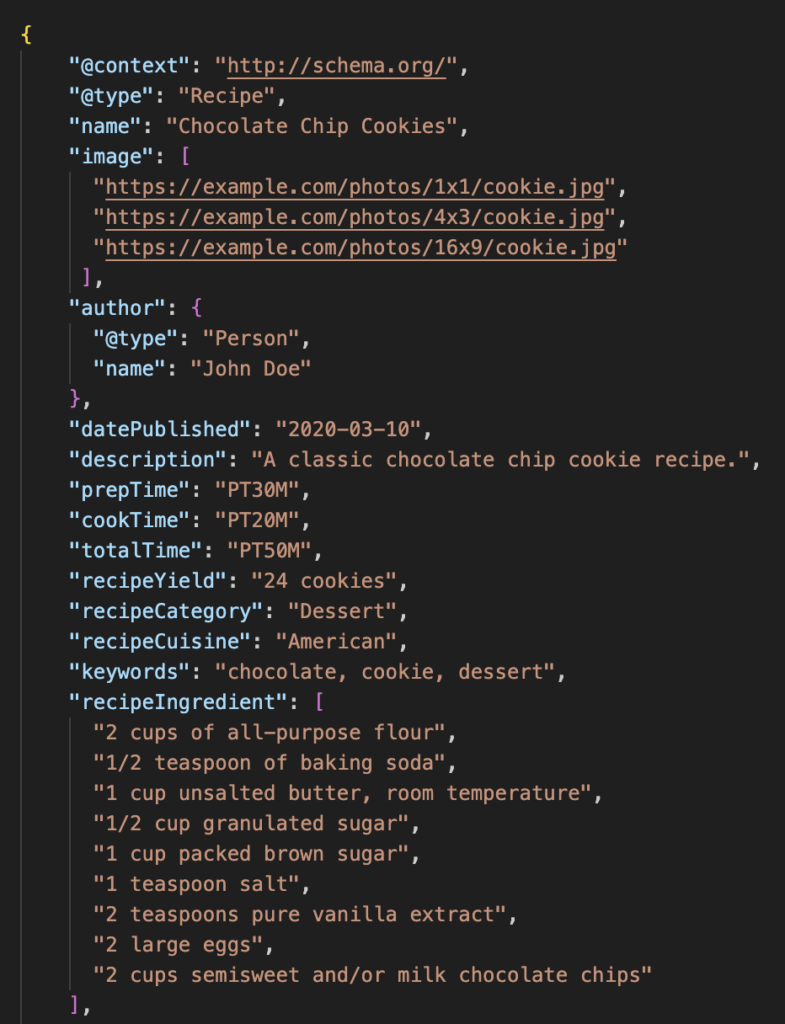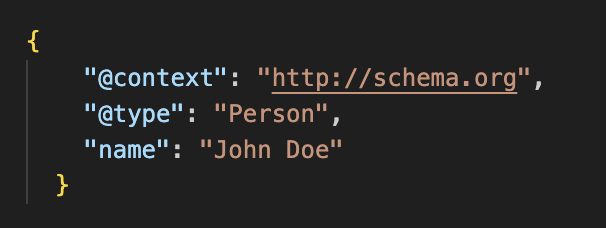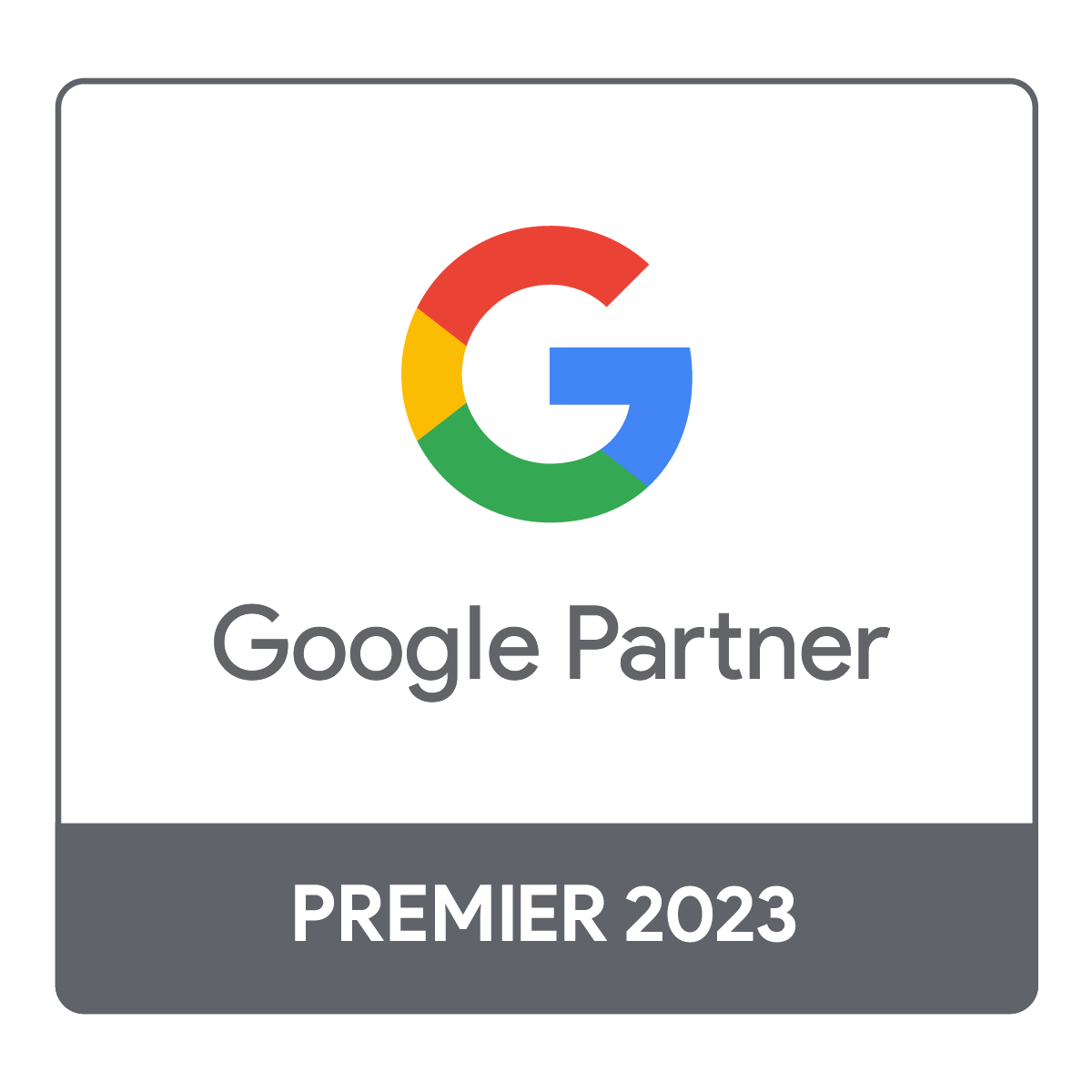Rich Snippets: SEO Guide
Introducing Rich Snippets
In the vast and complex world of Search Engine Optimisation (SEO), there’s a particular facet that often goes under-appreciated but holds paramount importance: rich snippets. As the digital landscape becomes more competitive, understanding such nuanced aspects of SEO becomes indispensable for webmasters, marketers, and content creators.
Definition of Rich Snippets
Rich snippets are specialised forms of search results that display more information than traditional search results. Instead of just a website’s title, URL, and meta description, rich snippets offer users a snapshot of what to expect from the page, presenting data like reviews, images, product prices, and more. Think of them as an enhanced version of a standard search listing, giving users richer insights about a page before they even click on it.
For example, if you’ve ever searched for a recipe and saw results that included star ratings, cooking time, and a photo of the dish, you’ve encountered a rich snippet.

The Importance of Structured Data in SEO
Structured data plays a pivotal role in creating these rich snippets. It’s a specific kind of code that you add to your webpage to tell search engines detailed information about the content of your page. By understanding this data, search engines can provide more informative results to users.
But why is this so critical for SEO?
- Enhanced Visibility: Rich snippets stand out from regular search results. This can increase your page’s visibility and make users more likely to click on your link.
- Increased CTR: The additional information provided by rich snippets can increase the click-through rate (CTR) from the search results page to your website. A higher CTR can indirectly influence your site’s search rank.
- Reduced Bounce Rate: When users have a clearer idea of what to expect from a webpage (thanks to the detailed rich snippets), they’re less likely to leave immediately upon arriving. This can reduce bounce rates and signal to search engines that your site offers valuable content.
- Authority and Trust: Providing structured data and getting rich snippet results can position your brand as an authoritative figure in your industry. Seeing star ratings, for instance, can immediately convey the quality of a product or service to potential visitors.
Understanding Structured Data
Structured data, a topic that sounds profoundly technical, is essentially the backbone of the much sought-after rich snippets we see in search results. As we delve into its intricacies, the benefits and importance of structured data in the current digital age become evident.
What is Structured Data?
Structured data refers to any data that is organised and formatted in such a way that it’s easily understandable by search engines. In the context of SEO, it’s a specific code added to a website’s HTML to provide search engines with explicit clues about the content’s meaning. It emphasises context and clarity, enabling crawlers to categorise and index content appropriately.
Imagine structured data as a translator between your website and search engines. While your content might make perfect sense to human readers, search engines appreciate the clarity that structured data offers, ensuring that they present the most relevant results to users’ queries.
Formats of Structured Data:
As with many technical realms, there isn’t a one-size-fits-all approach to structured data. Several formats can be used, but three dominate the SEO world:
- Microdata:
- Description: An open-community HTML specification used to nest metadata within existing content. It is integrated directly into the HTML content of a web page.
- Application: It’s commonly used to label content to be used in a specific set of “items” — with a scope that can be a webpage, a portion of a page, or an individual point of data.
- Example:
<div itemscope itemtype="http://schema.org/Person">Hello, my name is <span itemprop="name">John Doe</span>.</div>
- RDFa (Resource Description Framework in Attributes):
- Description: RDFa is an extension to HTML5 and serves to embed rich data in web documents. It stands out for its flexibility and can be used with several XML-based document types, including SVG and XHTML.
- Application: Particularly effective for adding metadata to existing content without altering the content itself.
- Example:
<div vocab="http://schema.org/" typeof="Person">Hello, my name is <span property="name">Jane Doe</span>.</div>
- JSON-LD (JavaScript Object Notation for Linked Data):
- Description: This is a method of encoding Linked Data using JSON. Unlike Microdata and RDFa, which are integrated into the body of the webpage, JSON-LD typically sits within the page’s
<head>section. - Application: Its straightforward syntax and separation from the body content make it Google’s recommended structured data markup.
- Example:
- Description: This is a method of encoding Linked Data using JSON. Unlike Microdata and RDFa, which are integrated into the body of the webpage, JSON-LD typically sits within the page’s

Each format has its advantages and ideal use cases. Your choice will often be guided by your specific requirements, the nature of your content, and sometimes even personal or organisational preference.
Benefits of Using Rich Snippets
In the evolving realm of Search Engine Optimisation (SEO), rich snippets have emerged as a powerful tool to enhance a website’s visibility and user experience on search engine result pages (SERPs). These enriched search results offer a host of advantages, not just for website owners and SEO professionals, but for end-users as well. Let’s explore these benefits in detail.
1. Enhanced Search Results with Visual Enhancements
The typical search result offers a title, a URL, and a brief description. However, rich snippets take this a step further by adding visually compelling elements:
- Star Ratings: One of the most recognisable features of rich snippets, star ratings immediately signal the quality of a product, service, or content. For online shoppers or users looking for high-quality resources, these ratings can be a decisive factor in clicking a link.
- Images: A relevant image, whether it’s a product photo, an author’s portrait, or a recipe’s final dish, adds a visual dimension that can catch a user’s eye amidst a sea of text-heavy results.
These visual cues not only make the search results more aesthetically pleasing but also provide immediate insights into the content’s nature and quality.
2. Potentially Higher Click-Through Rates (CTR)
Click-through rate (CTR) is a vital metric for any digital marketer or website owner. A higher CTR means more visitors to your site from search results. Rich snippets, with their enhanced presentation, naturally draw more attention than regular listings. The additional details, such as product prices, availability, or review counts, can entice users to click on your website over competitors. Simply put, rich snippets can make your listing more “clickable.”
3. Providing Users with Instant Information
In today’s fast-paced digital world, users appreciate immediate answers. Rich snippets serve this very need:
- Searching for a product? Get its price and availability right on the SERP.
- Looking for a recipe? See the cooking time and calorie count instantly.
- Curious about an event? Find the date, location, and time without even clicking on a link.
This quick access to information streamlines the user’s search experience, saving them time and steps.
4. Better Relevance in Search Results
Structured data, which powers rich snippets, gives search engines a deeper understanding of a page’s content. This, in turn, allows search engines to match user queries with results more accurately. For instance, a user searching for gluten-free cake recipes will benefit from rich snippets that highlight relevant recipes with gluten-free in their titles or ingredient lists.
When your content is presented as a rich snippet, it signifies that search engines recognise its relevance to specific queries. This not only improves the user experience but also boosts the credibility of your content or product in the eyes of the searcher.
Types of Rich Snippets
In the digital world, where every click counts and every user’s intent is crucial, rich snippets serve as a bridge, connecting relevant content with the right audience. Various types of rich snippets cater to a wide array of queries, each type enhancing specific details that matter most to users. Let’s dive into these various types and understand what they bring to the table.
1. Product
For e-commerce platforms and online retailers, product rich snippets are invaluable. They provide users with a snapshot of:
- Price: Instantly know how much a product costs.
- Availability: Check if the product is in stock or out of stock.
- Review Ratings: Aggregate ratings give users an immediate sense of the product’s quality.
2. Recipe
For food bloggers and culinary sites, recipe rich snippets enhance search results by displaying:
- Ingredients: A quick glance at what’s needed.
- Cooking Time: Know how long it’ll take to prepare and cook.
- Ratings: Aggregate scores from users who’ve tried the recipe.
3. Review
Review snippets focus on the collective feedback of customers or audiences, showcasing:
- Aggregate Rating: A numerical or star rating, giving an overall sense of how well a product or service is perceived.
4. Event
Ideal for event organisers, venues, and ticketing sites, event rich snippets highlight:
- Dates: When is the event taking place?
- Locations: Know where to go.
- Event Details: A brief about what the event encompasses, be it a concert’s line-up or a conference’s keynote speakers.
5. Person
Prominent for professionals, artists, and public figures, these snippets provide information about an individual:
- Biographical Information: Brief insights into the person’s life or career.
- Affiliations: Associations with institutions or organisations.
- Contact Details: Potentially a professional email or phone number.
6. Video
For platforms hosting or promoting videos, these snippets enhance visibility with:
- Thumbnail: A visual representation of the video content.
- Duration: Know how long the video runs.
- Description: A brief summary of the video’s content.
7. Article
Digital publishers, bloggers, and news outlets benefit from article snippets that emphasise:
- Headline: The main title of the piece.
- Author: Know who penned the article.
- Date of Publication: Establish the timeliness and relevance of the content.
8. Others
There’s a rich tapestry of other snippet types catering to varied niches:
- Music: Highlight artists, album names, or song previews.
- Local Businesses: Display operational hours, location, and contact information.
- Books: Showcase authors, reviews, and a brief synopsis.
- … and more: The possibilities are vast, from apps to movies to courses, tailored to specific industry needs.
How to Implement Rich Snippets
1. Picking the Right Markup Format
The first step towards implementing rich snippets is choosing the right markup format. There are several structured data formats, such as Microdata, RDFa, and JSON-LD. However, most SEO professionals and webmasters gravitate towards JSON-LD for several reasons:
- Separation from Content: Unlike other formats that intertwine with the content, JSON-LD typically sits in the
<head>section of the page, making it cleaner and easier to manage. - Google’s Recommendation: Google explicitly recommends JSON-LD for structured data, and when it comes to SEO, adhering to Google’s guidelines is always a prudent choice.
- Readable Structure: The format is more straightforward and human-readable compared to others, making it simpler for webmasters to understand and edit.
2. Tools to Generate Structured Data
While one can craft structured data manually, several tools simplify this process by generating the required code. Here are a couple of widely-used tools:
- Google’s Structured Data Markup Helper: This is an intuitive tool offered by Google. Users can pick the type of data they want to markup, tag content directly on their webpage, and the tool then generates the appropriate structured data.Use Google’s Structured Data Markup Helper
- Schema Markup Generator: Created by Merkle, this tool provides a user-friendly interface where you fill out a form based on the type of content, and it generates the JSON-LD code accordingly.Access Schema Markup Generator
Both tools provide step-by-step processes, making the creation of structured data a breeze even for those less technically inclined.
3. Integrating Markup in Your Website’s Code
After generating the structured data, the next step is integrating it into your website. For JSON-LD, this typically involves:
- Locate the
<head>Section: Open the HTML of your webpage and locate the<head>section. This is usually at the very top of your page’s code. - Paste the JSON-LD Code: Copy the generated JSON-LD structured data and paste it within the
<head>section. - Repeat for Each Page: Remember, each page can have its structured data, especially if they feature different content types (e.g., product pages vs. blog articles). Repeat the process for every relevant page.
- Test with Google’s Rich Results Test: After integrating the markup, use Google’s Rich Results Test to ensure that the structured data is correctly implemented and detect any potential issues.
- Stay Updated: Structured data guidelines and requirements can change. It’s vital to stay updated with any changes in the schema definitions or search engine guidelines. Regularly check and validate your structured data to ensure ongoing compliance.
Testing and Validating Structured Data: An SEO Essential
In the ever-evolving landscape of SEO, structured data stands out as a powerful tool to improve search visibility, engagement, and click-through rates. However, just as a master chef would taste and adjust a dish before serving, SEO professionals must test and validate their structured data to ensure optimal performance. This process not only prevents potential penalties from search engines but also ensures that your content is presented to its maximum potential in search results.
1. Premier Tools for Testing and Validation
When it comes to the world of SEO, precision is paramount. Fortunately, there are trusted tools specifically designed to analyse and validate structured data:
- Google’s Structured Data Testing Tool: An industry-standard offered by Google, this tool allows you to paste in your code or a URL to analyse the structured data present. It provides feedback on errors, warnings, and correctly structured elements, ensuring that your markup adheres to best practices. Utilise Google’s Structured Data Testing Tool
- Rich Results Test: Another gem from Google, the Rich Results Test focuses on how your page might appear in the search results. It helps you understand which search features are driven by your structured data and detects any issues that might prevent rich results from being displayed. Explore with Google’s Rich Results Test
2. Common Pitfalls and Their Remedies
Structured data, though powerful, can sometimes be a tricky terrain. Here are some common mistakes webmasters make and the solutions to rectify them:
- Missing Required Property: This is when essential elements of your schema, like the price of a product or an event date, are absent.
- Fix: Review the schema guidelines for your specific structured data type. Make sure to include all mandatory properties. For detailed requirements, you can refer to the official Schema.org documentation.
- Invalid Value Format: This occurs if a property’s expected value type doesn’t match your input, e.g., entering text where a number is expected.
- Fix: Ensure all values align with their expected formats. Convert text strings to numbers or vice versa as necessary.
- Syntax Errors: Commonly arising from misplaced brackets or commas in the JSON-LD format.
- Fix: Carefully review your code for any discrepancies. For an in-depth check, consider using a dedicated JSON-LD validator.
- Unrecognised Property: Indicates that a property used isn’t part of the official schema vocabulary.
- Fix: Cross-reference your markup with the official schema documentation to ensure you’re using only recognised properties.
Testing and validating structured data isn’t just an optional step in the SEO process, it’s a necessity. Just as meticulous attention to detail can elevate a brand’s online presence, oversights can impede visibility and performance.
With the right tools and an understanding of common errors, you’re well on your way to maximising the impact of your structured data in the search landscape. At First Page Ireland, we’re committed to delivering excellence in every aspect of SEO. Don’t leave your performance to chance; ensure your structured data is primed for success.
Best Practices for Rich Snippets
Here, we dive into the best practices that every SEO professional should embrace to ensure optimal, sustainable results.
1. Ensuring Your Content Matches the Markup
One of the foundational principles of SEO is authenticity. When it comes to rich snippets, this principle holds paramount importance.
- Consistency is Key: Your markup should reflect the core content of your page. For instance, if your structured data indicates a product rating of 4.5 stars, the same should be visibly clear on your website.
- Avoid Over-promising: Don’t mark up content that isn’t visible to users on the page. If your markup mentions special features or benefits that users can’t find on the page itself, it can lead to mistrust and increased bounce rates.
- Regular Audits: Periodically review your structured data alongside your page content. Websites evolve, and making sure your markup evolves with it ensures long-term alignment.
2. Avoiding Spammy Behavior
Structured data offers immense potential benefits, but misuse can lead to penalties. Here’s how to keep things above board:
- Genuine Reviews: Only include real, authentic reviews in your markup. Fabricating reviews or inflating ratings might offer short-term gains, but search engines are increasingly sophisticated in detecting such behavior—and the penalties can be severe.
- Relevance Matters: Ensure that your structured data is directly relevant to the primary content of the page. For example, don’t use a “Recipe” markup on a page dedicated to car reviews.
- Transparency: Avoid “bait-and-switch” tactics where the user is led to believe they’ll receive one type of content based on the rich snippet but encounters something different upon clicking.
3. Staying Updated
The digital world is ever-changing, and what’s standard today might be outdated tomorrow.
- Monitor Schema.org: Schema.org is the central hub for structured data definitions. Regularly check for updates or changes in definitions to ensure your markups stay compliant.
- Google’s Guidelines: Google, as the leading search engine, often updates its guidelines on rich snippets and structured data. Staying abreast of Google’s official guidelines ensures you remain in the search giant’s good books.
- Join SEO Communities: Online communities, forums, and SEO news outlets can be invaluable sources of updates. Engaging with these platforms keeps you informed about the latest trends, changes, and best practices in the world of rich snippets.
While rich snippets offer an incredible avenue to enhance online visibility and engagement, they need to be approached with care, authenticity, and a commitment to continual learning. At First Page, we champion a holistic approach, ensuring that our strategies aren’t just effective, but ethical and sustainable. In the realm of SEO, it’s not just about standing out, but standing tall with integrity and expertise. Let your rich snippets be a testament to your brand’s credibility and value in the digital age.
The Future of Rich Snippets and Structured Data
In the rapidly evolving digital realm, staying ahead of the curve is not just a strategic advantage, it’s a must. Rich snippets and structured data, once considered advanced tactics, are now foundational to any robust SEO strategy. But as we gaze into the horizon, what does the future hold for these powerful tools? Here, we embark on a journey into the anticipated shifts in the SEO landscape, the rise of voice search, and the potential entwinement of augmented and virtual realities with our search experiences.
1. Predicted Changes in the SEO Landscape
- Increasing Emphasis on User Intent: As search algorithms become more sophisticated, simply matching keywords may not suffice. Structured data will play a pivotal role in helping search engines understand the context and nuance of a page, leading to more accurate and user-centric results.
- Enhanced Formats: As user behaviour evolves, search engines might introduce new rich snippet formats, further diversifying how information is presented in SERPs.
- Mobile-First Indexing: With mobile search queries already surpassing desktop, structured data will need to be optimised for mobile devices, focusing on speed, user experience, and relevance.
2. Emergence of Voice Search and Its Reliance on Structured Data
- Direct Answers: Voice search, by nature, requires concise, direct answers. Structured data aids search engines in pinpointing the most relevant information to be relayed audibly, making it invaluable in a voice-driven search ecosystem.
- Local SEO and Voice Search: Queries like “near me” or “closest to me” have surged with the rise of voice search. Structured data related to location, working hours, and services will be paramount in serving these local-intent queries effectively.
- Question and Answer Formats: As more users phrase voice queries in full questions, there will likely be an increased emphasis on Q&A formats in structured data, making content more accessible and digestible for voice search.
3. Potential for Richer Search Results in AR and VR Contexts
- Interactive SERPs: Augmented Reality (AR) and Virtual Reality (VR) have the potential to revolutionise search results. Imagine searching for a product and being able to view it in 3D through AR directly from the SERP, enabled by structured data.
- Localised Virtual Experiences: For local businesses, structured data could facilitate virtual “walk-throughs” or previews, allowing users to virtually experience a location before physically visiting.
- Enhanced E-commerce Shopping: For online retailers, VR could transform the shopping experience. Structured data might pave the way for users to “try” products in a virtual space, from clothing to furniture, ensuring they make confident purchasing decisions.
The future of rich snippets and structured data promises to be a blend of advanced technology, enriched user experiences, and deeper, more intuitive interactions with content. As the lines between the virtual and real world blur, let your brand’s digital presence be illuminated by the most cutting-edge, impactful, and immersive SEO practices.
Embracing the Power of Rich Snippets in the Digital Age
The digital era is marked by an ever-increasing influx of content, making the quest for visibility and relevance more challenging and competitive than ever. In this sprawling landscape, rich snippets have emerged as pivotal beacons, guiding users with clarity and precision to the content they seek.
Rich snippets, with their enhanced visual cues and concise information, not only improve the user experience but also boost the credibility and visibility of websites in search engine result pages (SERPs). They function as digital “elevators,” lifting high-quality, relevant content above the noise. Whether it’s a product’s price, a recipe’s cooking time, an event’s date, or an article’s key details, these snippets deliver immediate value, streamlining the user’s search journey.
However, their value isn’t just cosmetic. Behind the scenes, structured data acts as a bridge, facilitating clearer communication between websites and search engines. This harmonious exchange ensures that content is indexed, understood, and presented in the most impactful manner possible.
But why stop at the threshold of potential? Embracing rich snippets and structured data isn’t just about keeping pace, it’s about leading the charge in a dynamic digital age. For webmasters, marketers, and businesses, the message is clear: Structured data isn’t a mere “nice-to-have” but a “must-have.”
Dive In and Elevate Your Online Presence: We urge webmasters and content creators to not only implement structured data but to continually optimise and refine it. Tailor it to resonate with your target audience, ensure its accuracy, and most importantly, stay updated with the evolving best practices and guidelines.
Additional Resources
For those keen on delving deeper, here are some invaluable resources to guide you on your structured data journey:
- Schema.org: The definitive resource for understanding and implementing structured data vocabulary.
- Google’s Structured Data Guidelines: A comprehensive guide to Google’s perspective on structured data and its importance in SEO.
- Moz’s Beginner’s Guide to Structured Data: An easy-to-grasp introduction to the world of structured data, ideal for those just starting out.















